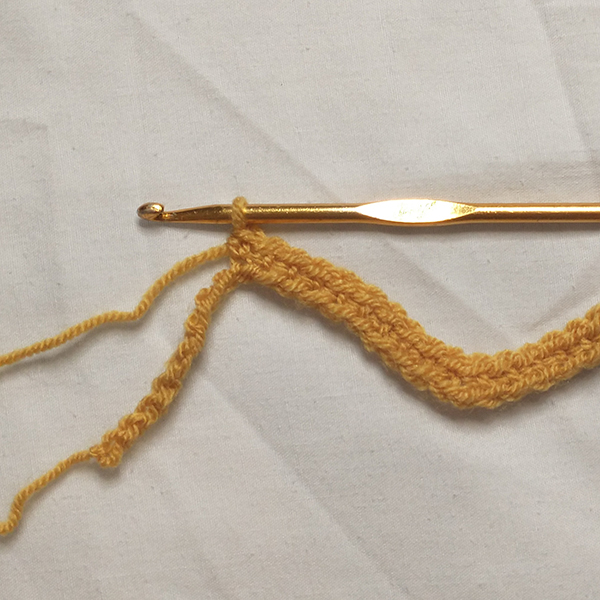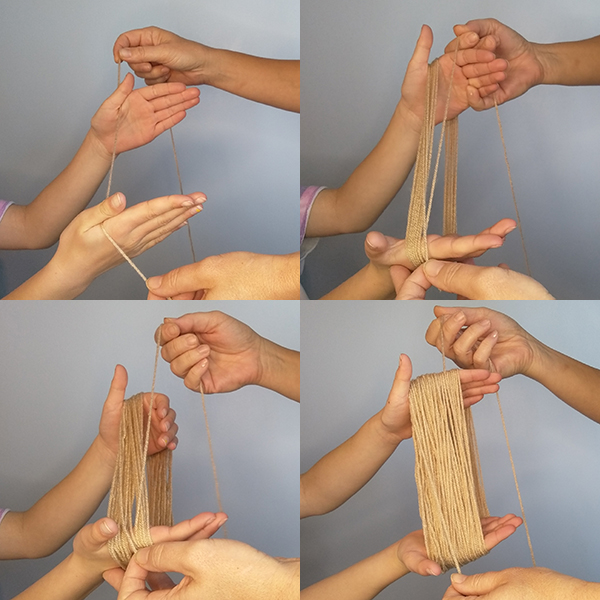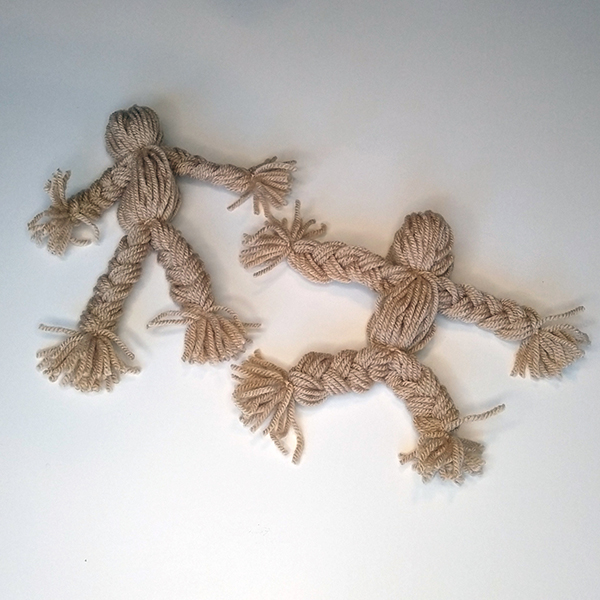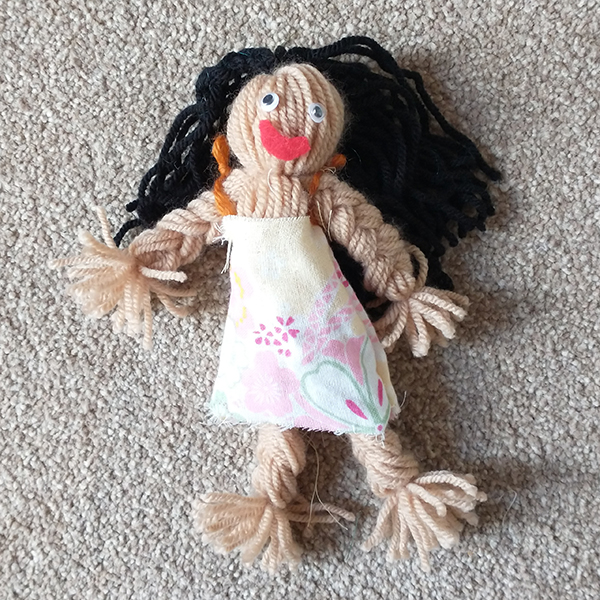Esperanza Rising by Pam Muñoz Ryan is about a girl who learns to keep her hope after losing her old life in Mexico and starting a new one in the Central Valley of California at the height of the Great Depression. It’s also about crocheting. A lot of crocheting! Esperanza learns a lesson valuable to both crochet and life at the beginning of the story: “Do not be afraid to start over.”

The blanket pattern that Abuelita teaches is a zig-zag, with mountains and valleys that come to represent the highs and lows of Esperanza’s life. It’s a great first project for beginners, and is very forgiving of mistakes, especially if you use a chunkier yarn.
Mamá and Esperanza also make monas – cute little dolls – out of yarn. These dolls are quick and fun to make. They are a good way to use up leftover yarn and make for a fun class project.
Activity: Abuelita’s Zigzag Blanket
Note: this pattern uses American crochet terms. “single crochet” means “double crochet” if you use British crochet terms.
You can use any size yarn, although beginners should use thicker yarn (worsted weight or larger) as it will be easier to work with. Use a crochet hook appropriate to the yarn selected.
Chain a multiple of 20 stitches, stopping when you think you have made the blanket wide enough. Remember that the chain will not be straight, but form zig-zags, so make the foundation chain longer than the desired width of the blanket. Turn.
Row 1: 1 single crochet in each of the the next 10 chains.

Add one extra single crochet in the 10th chain.

1 single crochet in each of the next 9 chains.

Skip the next chain and work up the next mountain. Repeat the pattern to the end of the row. If you find that you have not put in the correct number of chains, remember what Abuelita said: “Do not be afraid to start over.” Chain 1 and turn.
Row 2: 1 single crochet in each of the next 10 stitches.

Add one extra single crochet in the last stitch.

1 single crochet in each of the next 9 stitches.

Skip the next stitch and begin repeating the pattern.

Continue to the end of the row. There will be one extra single crochet left at the end of the row after you count the last 9 stitches down the mountain. Leave that stitch. If you do not leave one empty stitch at the end of each row, the blanket will grow wider and wider as you go along. Chain 1 and turn.

Repeat Row 2 until the blanket reaches the desired length. You can make the blanket all of one color, create a pattern of stripes of similar or varying width, or try to recreate the blanket made by Esperanza in the book by using many different colors of yarn. If this blanket is made for a class project, students can each bring in a bit of yarn to contribute, and then try their hand at making the “mountains and valleys” of the blanket.
Activity: Esperanza’s Monas
Get some yarn. Any kind will do, although for beginners a worsted weight or chunkier yarn will be best. You will need a partner to hold out his or her hands about nine inches apart. Gently wrap the yarn around your partner’s hands about fifty times.

Tie some yarn tightly around one end of the loops. Be sure to leave the ends of this yarn long enough that they can blend in.
Tie another bit of yarn slightly lower to make a neck for the doll. Once again, leave the ends of this yarn long enough to match the rest of the yarn. Hold the doll by its neck, then cut the loops at the bottom.
Divide the yarn into four equal sections. Bring the two middle sections together to form a body. Loop a length of thread twice around where you want the doll’s waist to be and knot as tightly as you can.
Split the ends of the body section into two equal parts and continue braiding the legs. Tie yarn tightly around the ankles of the dolls, leaving two puffy feet. Do not tie the ankles too low or the knotted yarn will slip off. Braid each arm. Stop when the arms look long enough. There will be extra yarn on the arm portions. Tie off the wrists as for the ankles. Trim the excess yarn to make fluffy hands and feet.

If you like, you can decorate your yarn mona however you like. Add eyes, hair, or clothing with felt, cloth, or other materials.

Music in this Episode
“Naranja Dulce” a Mexican folk song

